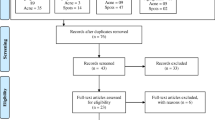Abstract
AA is a common autoimmune skin disease that causes hair loss on the scalp and sometimes other areas of the body. New therapy approaches for alopecia areata are emerging, with the goal of improving clinical outcomes. In this study, the effects of topical steroids against fractional Er:YAG laser followed by topical steroids in the treatment of alopecia areata will be compared. A total of 30 participants with alopecia areata were included in the study. Each patient's lesions were treated with one of two methods: topical clobetasol propionate or fractional Er:YAG laser followed by topical clobetasol propionate. SALT score, patient satisfaction, and dermoscopic imaging were used to evaluate therapeutic response. Both treatment modalities showed a significant clinical improvement in alopecia areata with a statistically significant reduction in the SALT score. The SALT score was more evident in the laser-steroid group. On comparing the dermoscopy findings in both treated areas before and after treatment, a significant reduction was found regarding all dermoscopic findings of alopecia areata in both modalities. Combining fractional Er:YAG laser with topical steroids is found to be a safe treatment modality and more effective than topical steroids in alopecia areata.





Similar content being viewed by others
References
Tomaszewska K, Kozłowska M, Kaszuba A, Lesiak A, Narbutt J, Zalewska-Janowska A (2020) Increased serum levels of IFN-γ, IL-1β, and IL-6 in patients with alopecia areata and nonsegmental vitiligo. Oxid Med Cell Longev 3:5693572
Strazzulla LC, Wang EHC, Avila L, Lo Sicco K, Brinster N, Christiano AM, Shapiro J (2018) Alopecia areata: disease characteristics, clinical evaluation, and new perspectives on pathogenesis. J Am Acad Dermatol 78(1):1–12
Lee S, Lee WS (2017) Management of alopecia areata: updates and algorithmic approach. J Dermatol 44(11):1199–1211
Stacey SK, McEleney M (2021) Topical corticosteroids: choice and application. Am Fam Physician 103(6):337–343
Ito T (2012) Advances in the management of alopecia areata. J Dermatol 39(1):11–17
Molinelli E, Campanati A, Brisigotti V, Sapigni C, Paolinelli M, Offidani A (2020) Efficacy and safety of topical calcipotriol 0.005% versus topical clobetasol 0.05% in the management of alopecia areata: an intrasubject pilot study. Dermatol Ther 10(3):515–521
Boechat A, Torezan L, Osório N (2016) Lasers, Lights, and Related Technologies in Cosmetic Dermatology. In: Issa M, Tamura B (eds) Daily Routine in Cosmetic Dermatology. Clinical Approaches and Procedures in Cosmetic Dermatology. Springer, Cham. https://doi.org/10.1007/978-3-319-20250-1_30-1
Lew BL, Shin MK, Sim WY (2009) Acute diffuse and total alopecia: a new subtype of alopecia areata with a favorable prognosis. J Am Acad Dermatol 60:85–93
Pratt CH, King LE, Messenger AG, Christiano AM, Sundberg JP (2017) Alopecia areata. Nat Rev Dis Primers 3:17011
Lee JH, Eun SH, Kim SH, Ju HJ, Kim GM, Bae JM (2020) Excimer laser/light treatment of alopecia areata: a systematic review and meta-analyses. Photodermatol Photoimmunol Photomed 36(6):460–469
Vazquez-Herrera NE, Tosti A (2020) Alopecia areata: clinical treatment. Hair and scalp treatments. Springer, Cham, pp 109–124
Yoo KH et al (2010) Treatment of alopecia areata with fractional photothermolysis laser. Int J Dermatol 49(7):845
Cho S et al (2013) Clinical effects of non-ablative and ablative fractional lasers on various hair disorders: a case series of 17 patients. J Cosmet Laser Therapy 15(2):74–79
Majid I, Jeelani S, Imran S (2018) Fractional carbon dioxide laser in combination with topical corticosteroid application in resistant alopecia areata: a case series. J Cutan Aesthet Surg 11:217–221
Yalici-Armagan B, Elcin G (2016) The effect of neodymium: yttrium aluminum garnet and fractional carbon dioxide lasers on alopecia areata: a prospective controlled clinical trial. Dermatol Surg 42:500–506
Ke J, Guan H, Li S, Xu L, Zhang L, Yan Y (2015) Erbium:YAG laser (2,940 nm) treatment stimulates hair growth through upregulating Wnt 10b and β-catenin expression in C57BL/6 mice. Int J Clin Exp Med 8(11):20883–20889
El-Husseiny R, Elframawy S, Abdallah M (2020) Comparative study between fractional carbon dioxide laser vs intralesional steroid injection in treatment of alopecia areata. Dermatol Ther 33(4):e13742
Tanakol A, Oba MC, Uzuncakmak TK, Askin O, Kutlubay Z (2020) Treatment of alopecia areata with 2940-nm fractional erbium:yttrium-aluminum-garnet laser. Dermatol Ther 33(6):e13978
Fukuyama M, Ito T, Ohyama M (2022) Alopecia areata: current understanding of the pathophysiology and update on therapeutic approaches, featuring the Japanese Dermatological Association guidelines. J Dermatol 49(1):19–36
Inui S, Nakajima T, Nakagawa K, Itami S (2008) Clinical significance of dermoscopy in alopecia areata: analysis of 300 cases. Int J Dermatol 47(7):688–693
Ganjoo S, Thappa DM (2013) Dermoscopic evaluation of therapeutic response to an intralesional corticosteroid in the treatment of alopecia areata. Indian J Dermatol Venereol Leprol 79:408–417
Funding
This is a contributors' own work, and the working team didn't receive any funds.
Author information
Authors and Affiliations
Corresponding author
Ethics declarations
Conflict of interest
Authors have no conflict of interest to declare.
Additional information
Publisher's Note
Springer Nature remains neutral with regard to jurisdictional claims in published maps and institutional affiliations.
Rights and permissions
Springer Nature or its licensor (e.g. a society or other partner) holds exclusive rights to this article under a publishing agreement with the author(s) or other rightsholder(s); author self-archiving of the accepted manuscript version of this article is solely governed by the terms of such publishing agreement and applicable law.
About this article
Cite this article
Shokeir, H.A., Yousry, A. & Ibrahim, S.M.A. Comparative study between topical steroid alone versus combined fractional Erbium:YAG laser with topical steroid in treatment of alopecia areata. Arch Dermatol Res 315, 241–247 (2023). https://doi.org/10.1007/s00403-022-02417-0
Received:
Revised:
Accepted:
Published:
Issue Date:
DOI: https://doi.org/10.1007/s00403-022-02417-0



